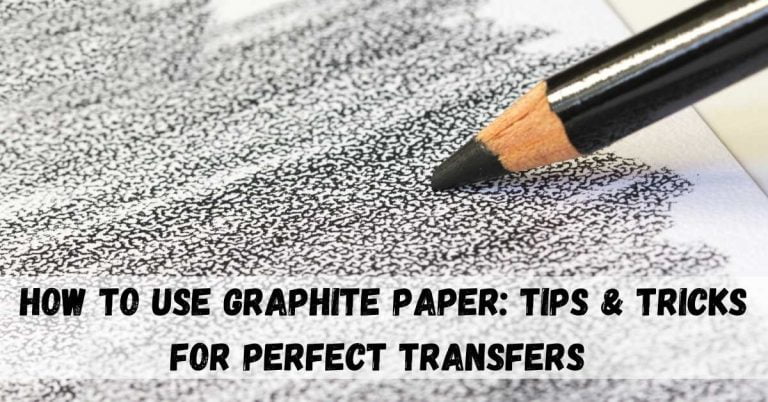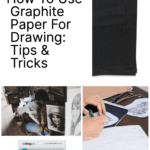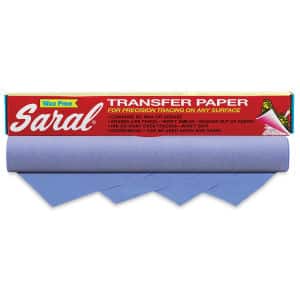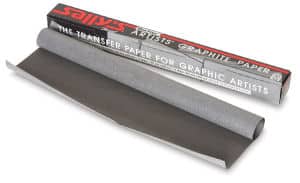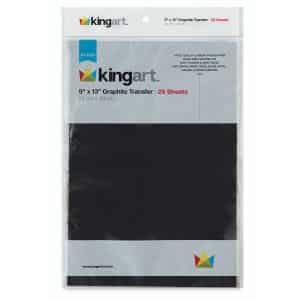Last Updated on September 7, 2023 by Dee
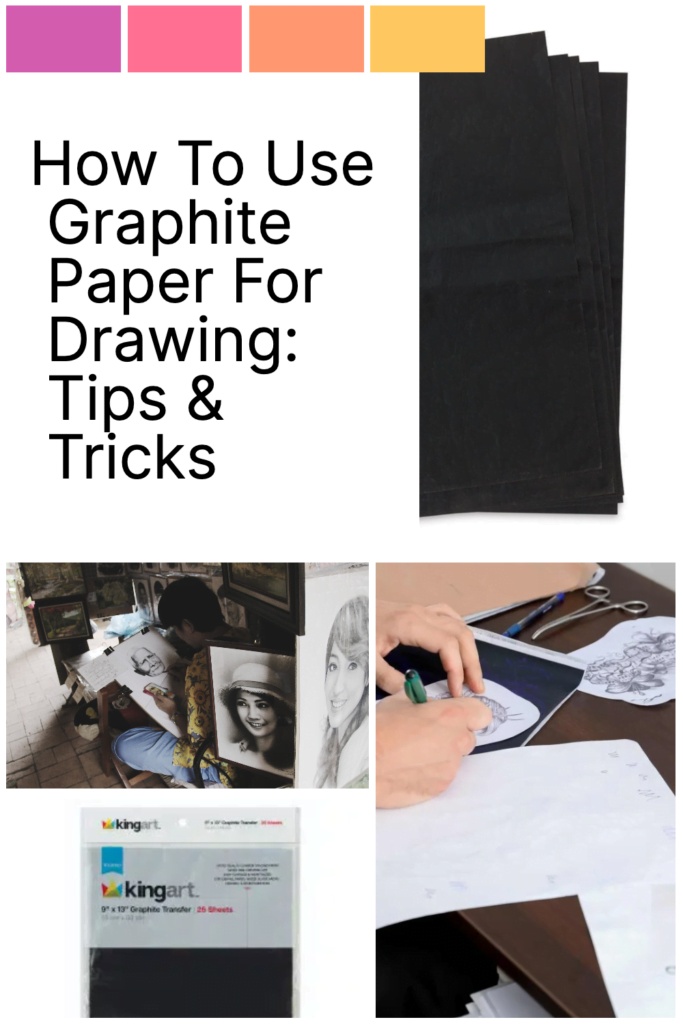
If you’re looking for an easy way to transfer images from one surface to another, then artist graphite paper and transfer paper are the products for you!
In this blog post, we’ll discuss the different types of transfer paper available, as well as how to use graphite paper for perfect transfers. We’ll also provide some tips and tricks that will help make your transfers easier than ever!
How to use Graphite Paper
Graphite transfer paper is a great way to transfer images onto surfaces that are difficult to transfer onto directly. The graphite in the paper acts as a barrier between the surface and the image, making it easier to transfer the image without smudging or losing detail.
Graphite paper is a handy tool for transferring patterns or drawings onto another surface. Also known as tracing paper, it is often used by artists and quilters to create accurate copies of their original designs.
Using graphite paper is a simple process, though there are a few things to keep in mind for best results.
- First, be sure to use a hard, smooth surface for your work area. This will prevent the graphite from smudging as you work.
- Next, place the graphite paper underneath the pattern or drawing that you wish to transfer.
- Use a pencil or other sharp object to trace over the lines of the design, applying firm pressure.
- Use a kneaded eraser to remove unwanted marks from the paper’s surface.
The graphite will transfer onto the surface below, leaving a faint but visible copy of the original. With a little practice, you can use graphite paper to create perfect replicas of any design.
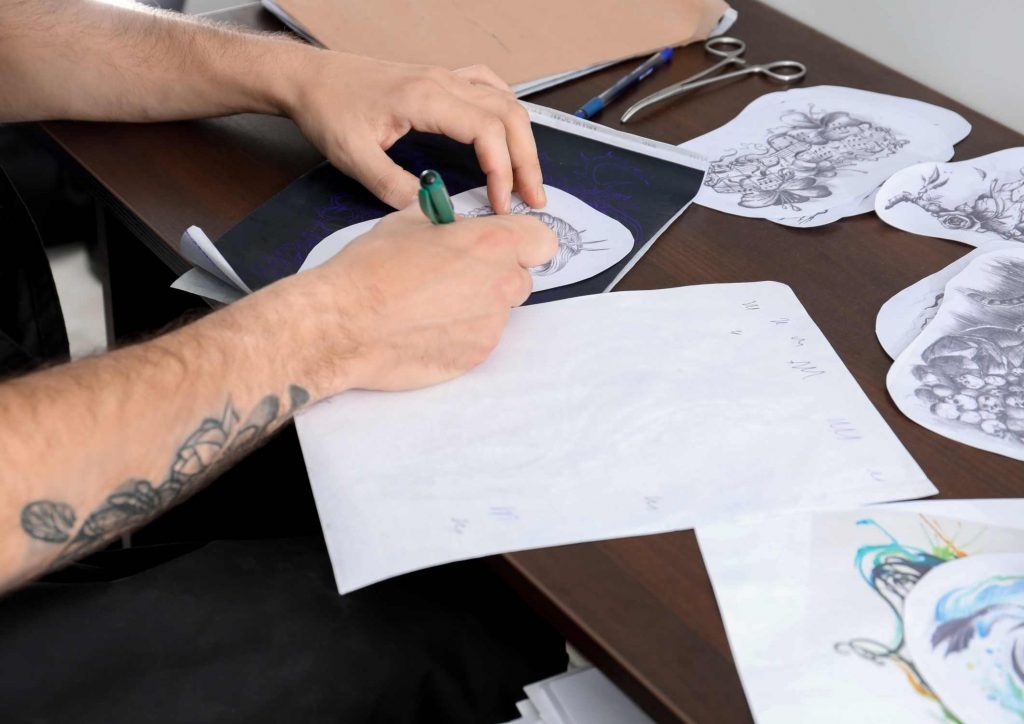
So, when using graphite paper, keep these things in mind:
- Use a pencil or other pointed object to trace over the image. This will help transfer the graphite onto the surface.
- Make sure the graphite is evenly distributed over the entire surface of the paper. Otherwise, you may end up with an uneven or patchy transfer.
- Be careful not to press too hard when tracing over the image. This can cause the graphite to break through the paper and ruin your transfer.
Now that you know how to use graphite paper for perfect transfers, let’s take a look at some tips and tricks that will help make your transfers easier than ever!
**This page may contain affiliate links to products I have used or recommend. If you purchase something from this page, I may receive a small percentage of the sale at no extra cost to you.**
What is Artist Graphite Paper Used For
Graphite paper is an extremely useful tool for artists of all levels of experience.
For beginners, graphite paper can be placed underneath their normal drawing paper in order to help them with the proportions and perspective of their drawings.
For more experienced artists, graphite paper can be used for transferring the image they want to draw onto their drawing paper.
This is especially useful when the artist is working with a particularly large piece of drawing paper and they do not want to waste any time or effort on a sketch that they are not happy with.
In addition, graphite paper can also be used for adding shading and highlights to drawings.
By using different types of graphite paper, artists can create a wide range of effects that can bring their drawings to life.
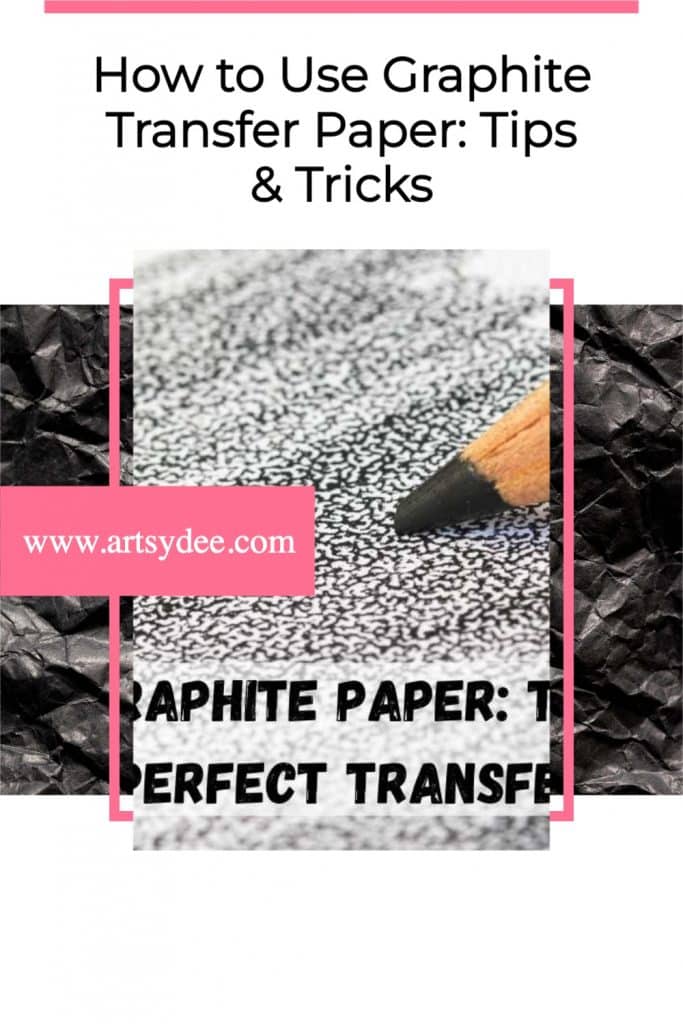
Tips and Tricks for Perfect Transfers
Graphite paper is a great way to transfer a design onto another surface, but it can be tricky to use.
Here are a few tips and tricks to help you get the perfect transfer every time:
- Start with a clean surface. Any dirt or debris on the surface will show up in the transfer.
- Use a light touch with a soft, rather than a hard lead pencil. Pressing too hard will cause the graphite to smear and make the transfer less defined.
- Use a sharp pencil. A dull pencil will make it difficult to get a crisp, clean line.
- Place the graphite paper-coated side down on the working surface.
- Go slowly and steady. Rushing through the process will likely result in an imperfect transfer.
[Related article: Learn How to Start Drawing – 22 Easy Tips to Get you Started!]
Different Types of Transfer Paper
If you’ve ever tried to transfer an image onto another surface, you know that it’s not always as easy as it seems. The key is to choose the right type of transfer paper.
I recommend any of the following Graphite Transfer Paper Brands for creating clean, crisp, transfers.
Here’s a quick rundown of the most popular types:
- Wax paper: This is the most straightforward and most inexpensive type of transfer paper. However, it’s also the least effective. The wax can prevent the ink from bonding properly with the surface, resulting in a fuzzy or smeared image.
- Lightweight transfer paper: This type of paper is slightly heavier than wax paper and produces better results. However, it’s still not suitable for transferring images onto dark or textured surfaces.
- Heavyweight transfer paper: This is the heaviest and most expensive type of transfer paper. It’s also the most effective, making it ideal for transferring images onto dark or textured surfaces.
- Inkjet transfer paper: This special type of paper is designed for use with inkjet printers. It produces high-quality results, but it’s also more expensive than other types of transfer paper.
So which type of transfer paper should you choose? It depends on your project and your budget. If you’re just looking to transfer a simple image onto a light-colored surface, then wax paper or lightweight transfer paper will do the trick.
However, if you’re looking to transfer an image onto a dark or textured surface, then heavyweight transfer paper is your best bet.
Now that you know the different types of transfer paper available, let’s discuss how to use graphite paper for perfect transfers.

Where to Find Transfer Paper
I personally buy transfer paper here, because I know it’s good quality and does the job!
As any crafter knows, the right tools can make all the difference when it comes to creating a beautiful project. And one of the most versatile tools in any crafter’s arsenal is graphic transfer paper.
This special paper allows you to transfer images onto a variety of surfaces, including wood, fabric, and even glass. But where can you find the best selection of graphic transfer paper?
One great option is your local craft store. Many stores carry a small selection of transfer papers, and the staff is usually happy to help you find the right paper for your project.
Another option is to shop online. There are many reputable retailers that sell graphic transfer paper, and you’ll often be able to find a better selection and better prices than you would at a brick-and-mortar store.
No matter where you choose to shop, take some time to read customer reviews before making your purchase. This will help you ensure that you’re getting a high-quality product that will meet your needs.
Check out this great video on how to use graphite transfer paper…
Frequently Asked Questions About Graphite Transfer Paper…
Is graphite paper the same as carbon paper?
No, graphite paper is not the same as carbon paper. Carbon paper is used to make copies of documents, whereas graphite paper is used to transfer images.
What can I use instead of graphite paper?
You can trace your image onto paper using a lightbox. Or you can use the graphite transfer process whereby you color one side of a sheet of paper with a soft graphite pencil. You then draw on the backside of this paper so as to transfer the graphite lines onto another sheet.
Can you print onto graphite paper?
No, you cannot print onto graphite paper. Graphite paper is not designed to be fed through a printer.
Is graphite paper the same as transfer paper?
No, graphite paper is not the same as transfer paper. Transfer paper is used to transfer images, whereas graphite paper is used for drawing or tracing.
What is the graphite transfer method?
The graphite transfer method is a way of transferring images without using graphite paper. To do this, you color one side of a sheet of paper with graphite. You then draw on the backside of this paper so as to transfer the graphite lines onto another sheet.
What is carbon transfer paper used for?
Carbon transfer paper is used to make copies of documents. It’s not typically used for transferring images.
What can I use instead of carbon transfer paper?
If you’re looking for an alternative to carbon transfer paper, you can try graphite paper or the graphite transfer method.
How do you transfer a drawing onto canvas without transfer paper?
There are a few ways to transfer a drawing onto canvas without using transfer paper. You can use the graphite transfer method or trace your reference image onto the canvas using a lightbox.
You can also try freehanding your image onto the canvas. This method takes more time and patience, but it’s doable!
How do you transfer a picture from paper to canvas?
There are a few different ways to transfer a picture from paper to canvas. You can use the graphite transfer method, or you can trace your image onto the canvas using a lightbox.
You can also try freehanding your image onto the canvas. Or you can use the grid method. This method takes a bit more time and patience, but it’s definitely doable!
What is Artists’s transfer paper?
Artists’ transfer paper is a type of transfer paper that’s specifically designed for artists. It’s often made with a thicker, more durable paper that can withstand multiple erasures and re-tracings.
Can I paint on transfer paper?
Yes, you can paint on transfer paper using watercolor or acrylic painting. In fact, many artists use transfer paper as a way to create preliminary sketches for their paintings.
Which side of graphite paper goes down?
Place the shiny side, or graphite-covered side, of the graphite paper down on the surface you’re working on.
How do you use white graphite paper?
White graphite paper can be used in the same way as traditional graphite paper. The main difference is that white graphite paper is less likely to leave behind smudges and fingerprints.
Which side of transfer paper do you draw on?
The smooth side of the transfer paper is the side you’ll draw on.
Conclusion
Graphite transfer paper can be a useful tool for artists of all levels. It allows you to easily move your drawings from paper to canvas or other surfaces, and the results can be very impressive.
If you’re interested in trying out this technique, we recommend giving it a try. You may be surprised at how easy it is to use and how great the finished product looks.
Have you ever used graphite transfer paper? What did you think of the results?
Other articles you may enjoy…
12 Easy Steps to an Accurate Side Profile Drawing
The 10 Best Bags for Carrying Art Supplies to Class
How to Organize Art Supplies | The Ultimate Guide (2023)
